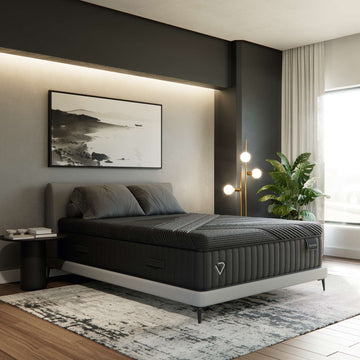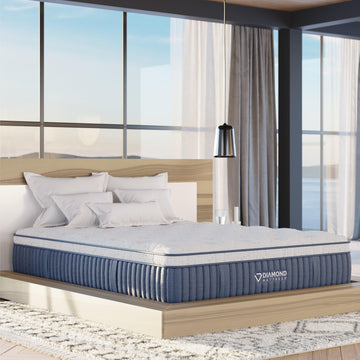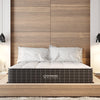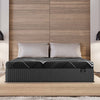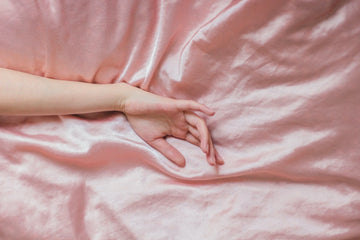If you have difficulty falling asleep, you may have tried masking disruptive sounds with white noise. This solution works well for many people, but it turns out that noise comes in other colors. Recently, pink noise has started to get some attention among people who believe it could be the real key to improved sleep quality.
The Color of Noise

What’s the deal with associating colors with noise, anyway? Light and colors both come in frequencies. Think about the color white. It’s visible across every electromagnetic frequency. White noise is also audible across every sound frequency. Pink noise is most audible at lower frequencies and becomes quieter at higher frequencies.
How does all of this translate to the average person’s listening experience? If white noise resembles a droning or humming sound like a fan or static, pink noise is similar to rain or rustling leaves. It is a flatter, lower sound.
How Does Pink Noise Improve Sleep?
Pink noise may protect sleepers from disruptive sounds. Loud, high-pitched, or jarring sounds can jolt you out of good sleep. Not only do you hear the sound, but you are also startled by the sudden and unexpected disruption. In a way, pink noise reduces the difference between regular background noise and these jarring sounds. It acts as a buffer.
Some studies and experiments suggest that your quality of sleep will improve if you use pink noise. Pink noise is believed to reduce brain activity, which can lead to better sleep. People who use these signals to sleep often report improved memory and concentration. More research must be done to see if these results are conclusive and consistent.
Where Can You Find Pink Noise Sleep Sounds?
There are a few ways to access pink noise to see if it can improve your sleep. For example, certain apps play continuous pink noise. You can also find pink noise on YouTube. Some people choose to download pink noise as an audio file, then allow it to play in a loop. Finally, there are pink noise machines like ones that produce white noise.
The good news is that no matter where you find it, there is no harm in using pink noise. At best, you will notice that your sleep is better. The worst that can happen is it simply doesn’t work. It’s certainly worth trying to improve your overall sleep quality.
Using Pink Noise for Quality of Sleep

If you are having difficulties falling asleep or getting enough restful sleep, pink noise is something you can add to your sleep hygiene arsenal. Many people have also had success with meditation, blackout curtains, or reducing blue light exposure.
It’s a good idea to think of these things as sleep accessories or “helpers.” They can improve your sleep, but they can’t replace the sleep gear that are essential for a great night’s sleep, including a mattress with good support and temperature regulating features, pillows designed for your preferred sleep position, and quality bedding that keeps you comfortable all night long.
